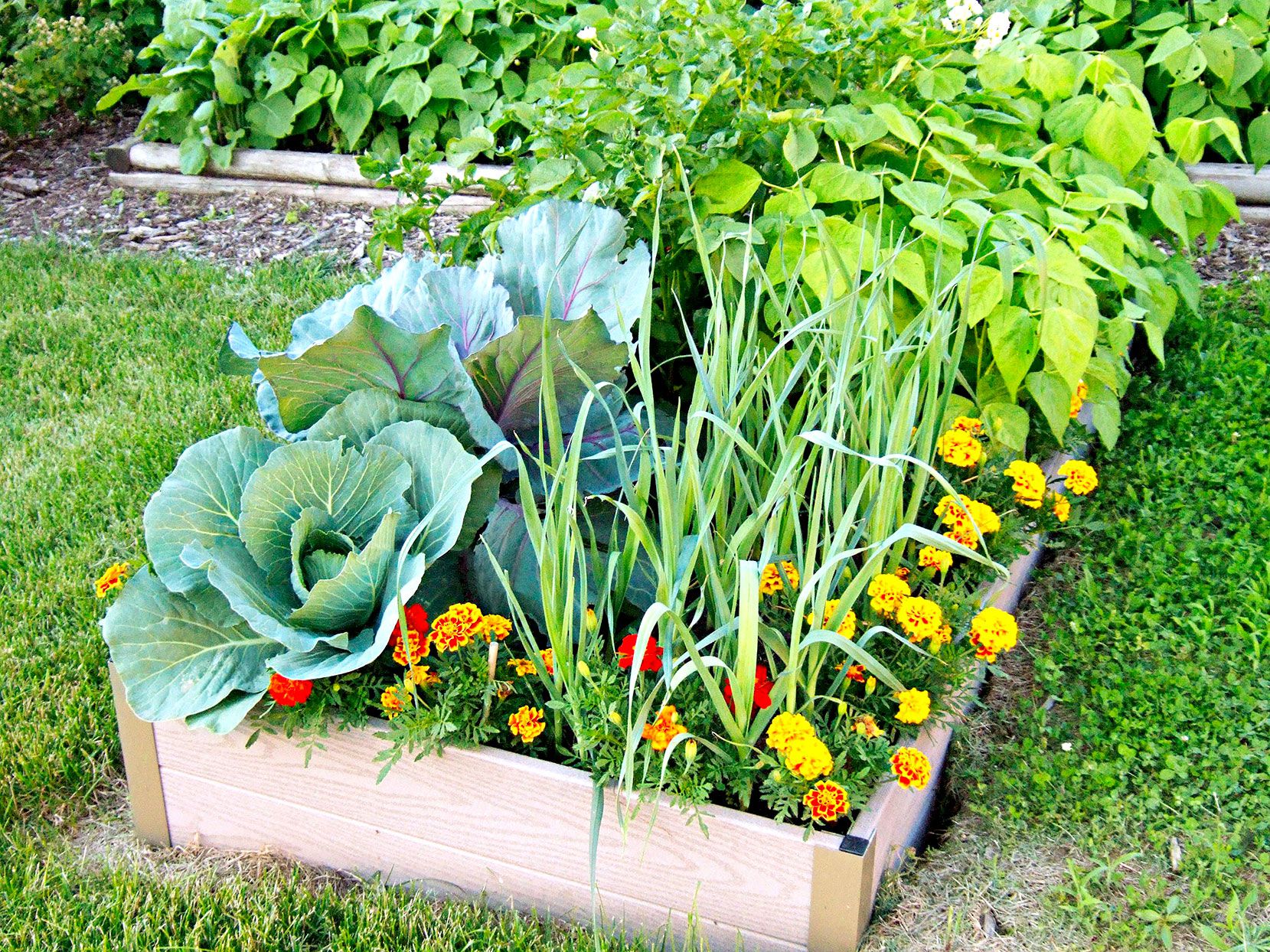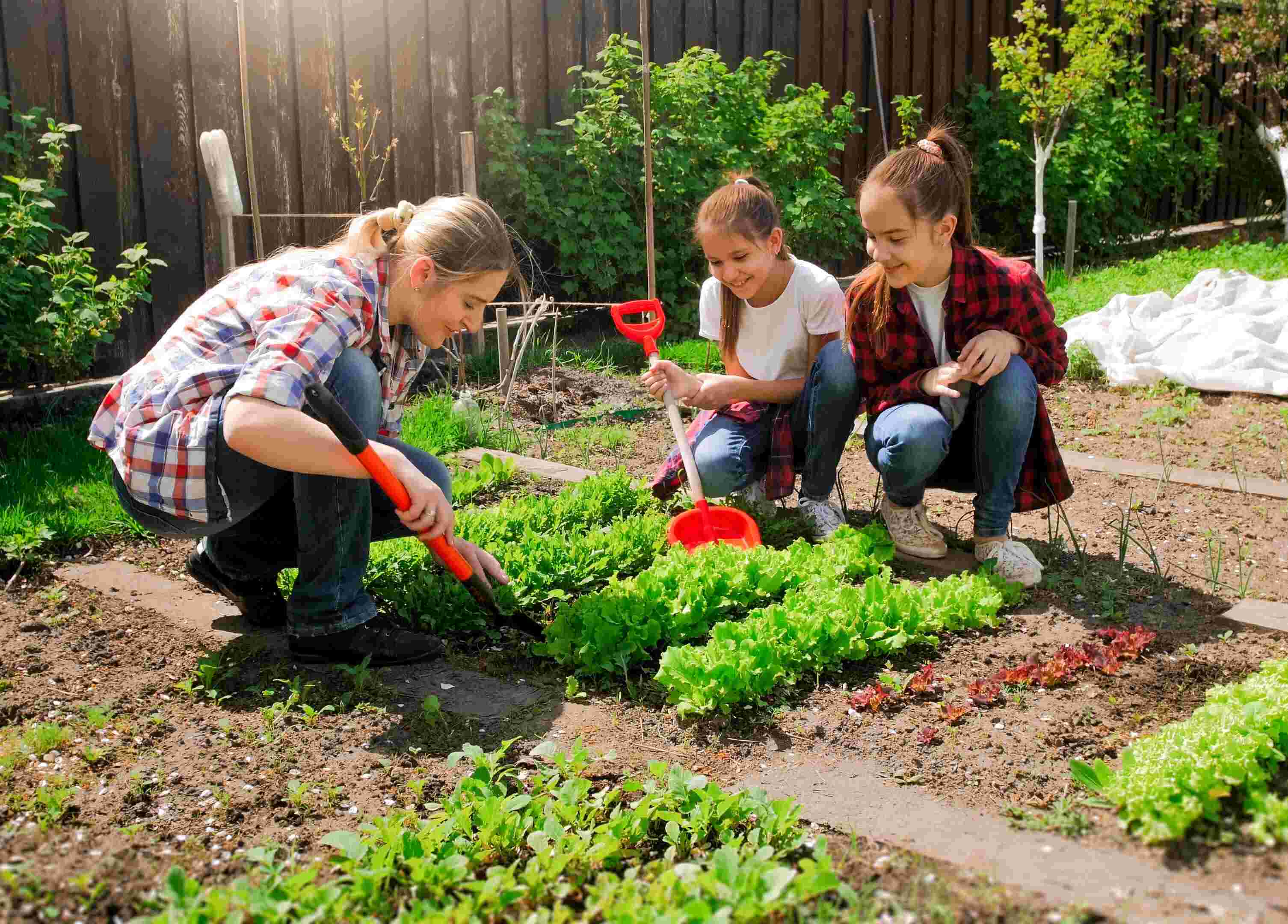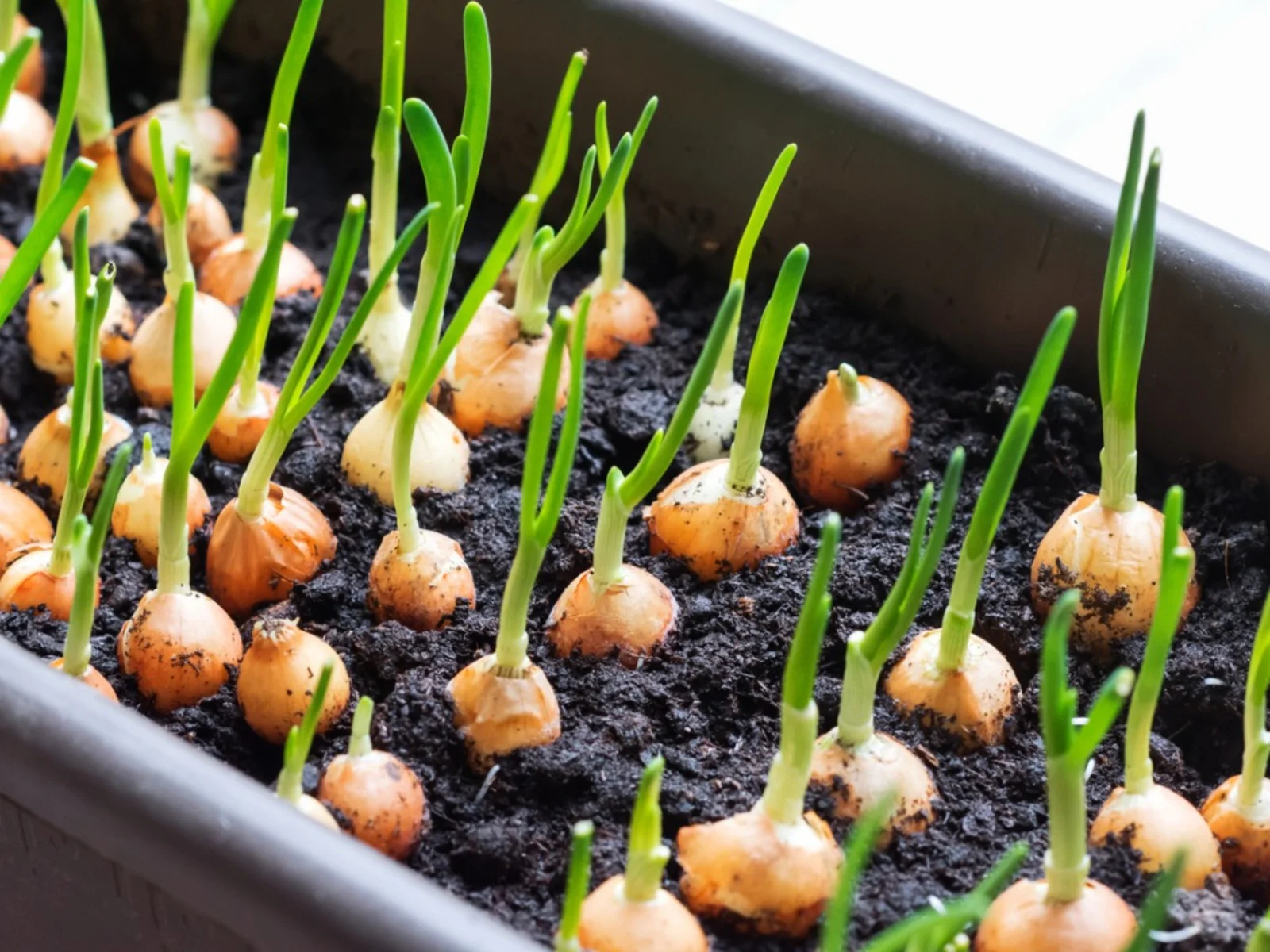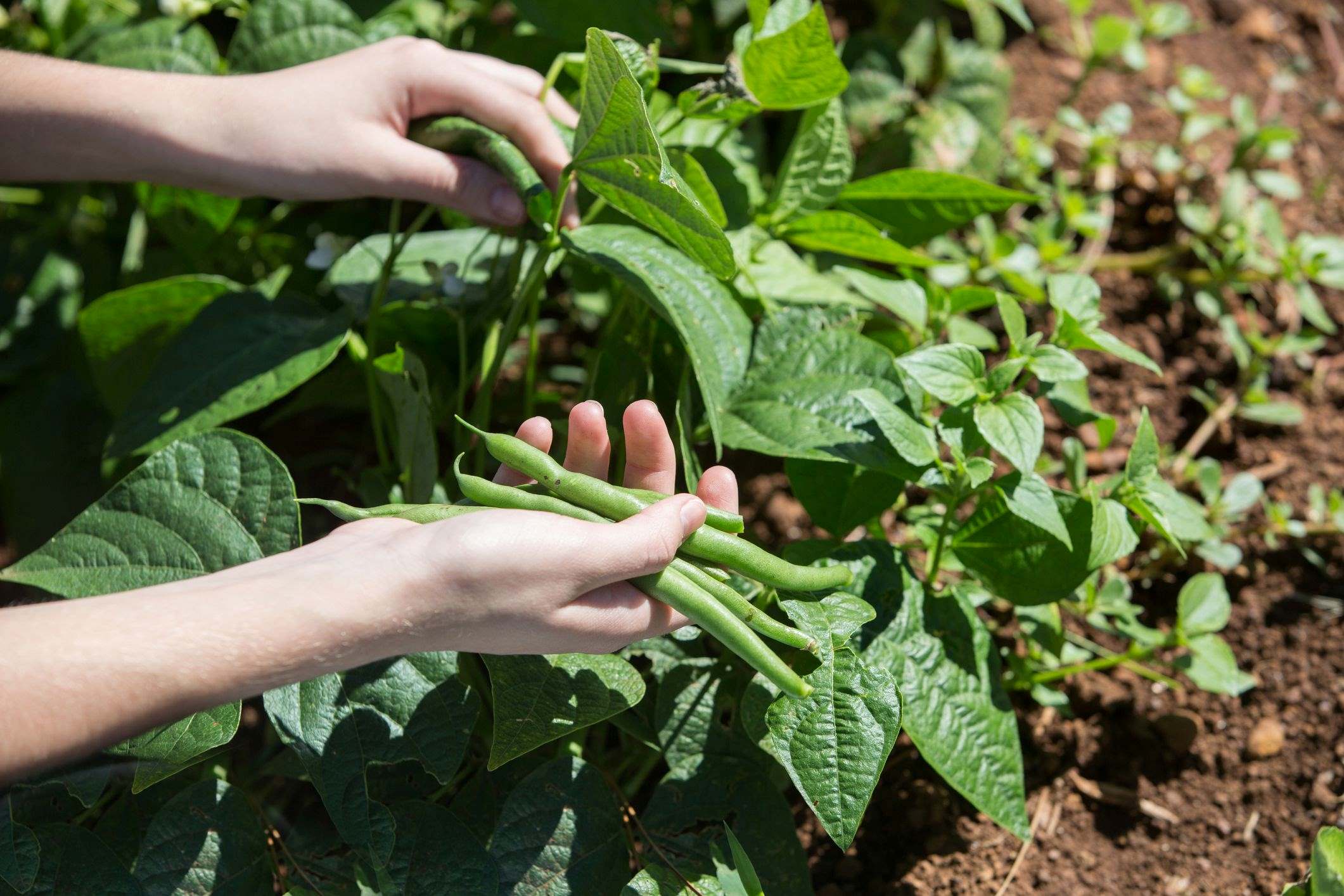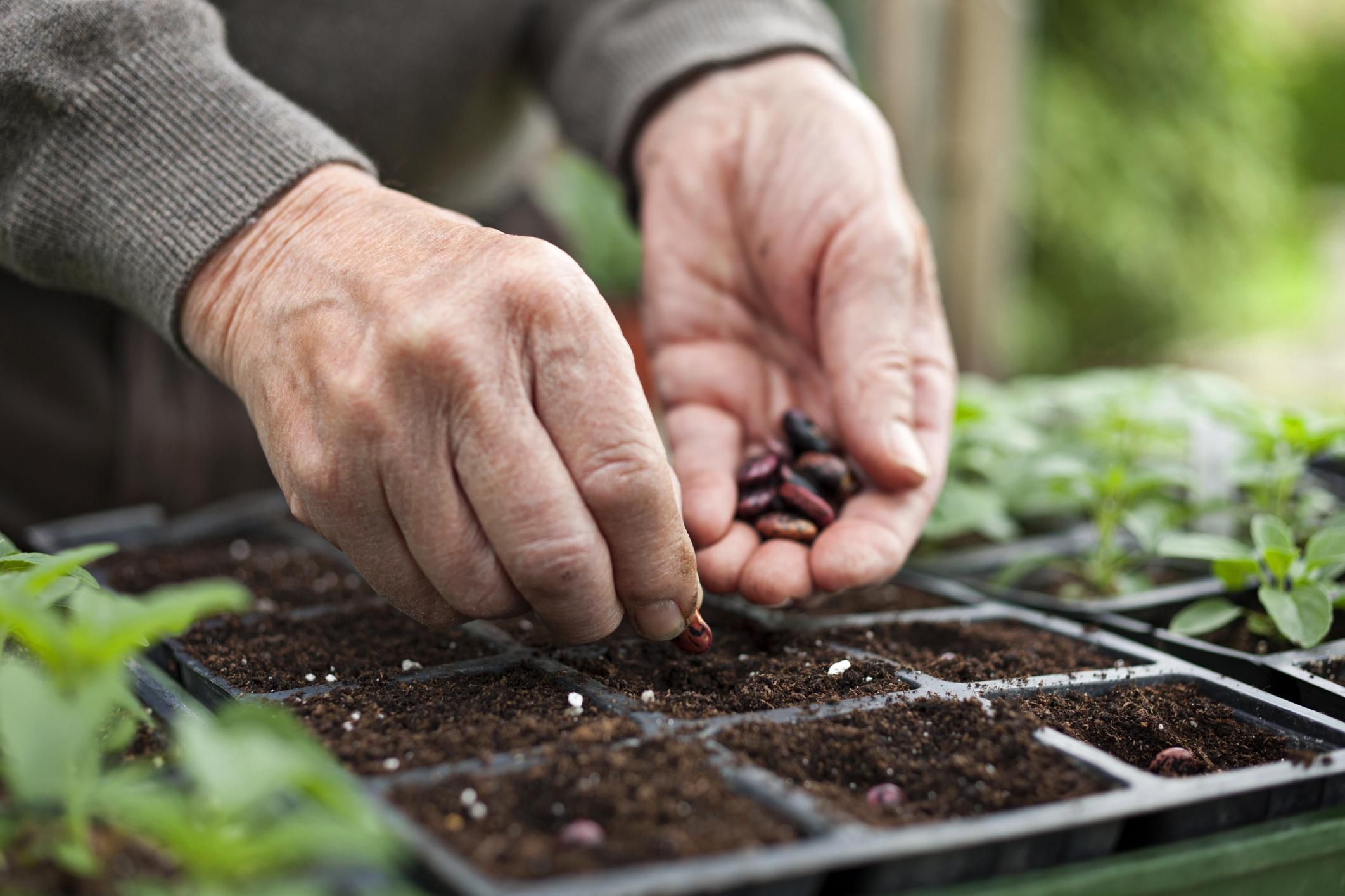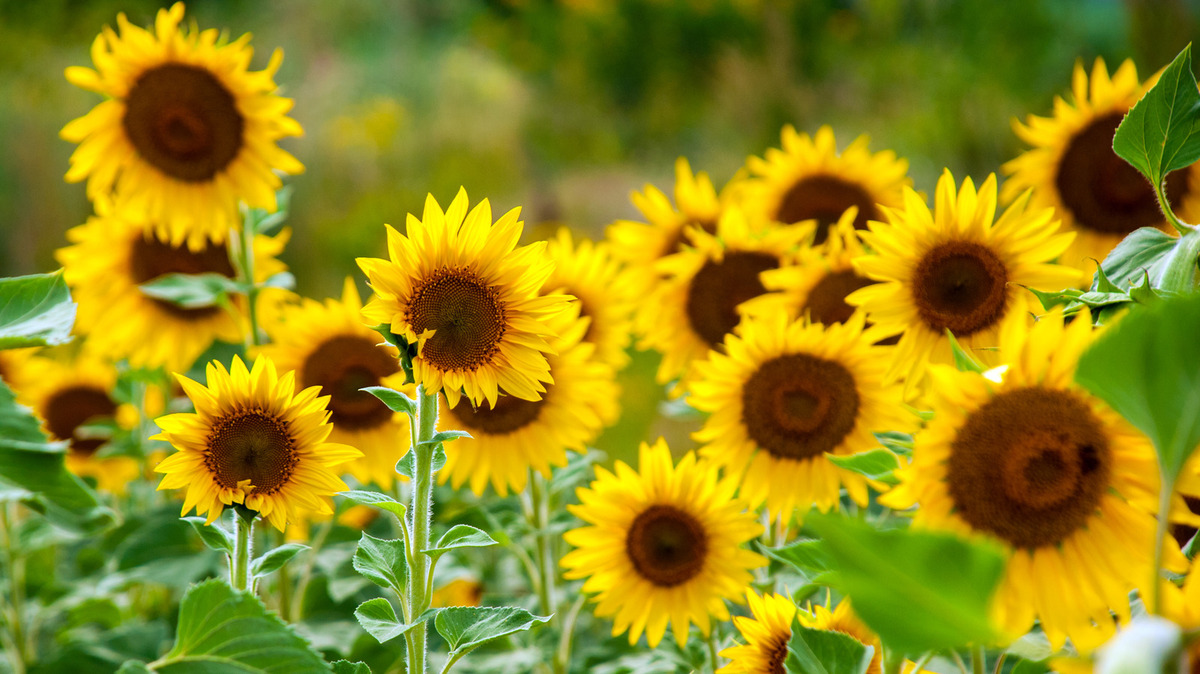Home>Types of Gardening>Edible Gardening>When Can I Start Planting Strawberries


Edible Gardening
When Can I Start Planting Strawberries
Modified: January 22, 2024
Learn when is the best time to start planting strawberries in your edible gardening journey. Find out the right conditions and tips for successful growth.
(Many of the links in this article redirect to a specific reviewed product. Your purchase of these products through affiliate links helps to generate commission for Chicagolandgardening.com, at no extra cost. Learn more)
Table of Contents
- Introduction
- Location and Climate Requirements for Strawberries
- Choosing the Right Variety of Strawberries
- Preparing the Soil for Planting Strawberries
- Different Planting Methods for Strawberries
- Proper Watering Techniques for Strawberries
- Maintaining and Caring for Strawberry Plants
- Dealing with Common Pests and Diseases in Strawberry Plants
- Harvesting and Storing Strawberries
- Conclusion
Introduction
Welcome to the world of edible gardening! There’s nothing quite like the satisfaction of growing your own fresh and delicious fruits and vegetables. If you’re a fan of sweet, juicy berries, then growing strawberries in your own garden is a must. Not only are they incredibly tasty, but strawberries are also relatively easy to grow and require minimal space. Whether you have a small backyard or even just a sunny balcony, you can enjoy the delights of homegrown strawberries.
When it comes to planting strawberries, timing is everything. Understanding when and how to plant strawberries is crucial for a successful harvest. In this article, we will explore the best time to start planting strawberries, along with essential tips and techniques to ensure healthy plant growth and a bountiful harvest.
The ideal time to begin planting strawberries depends on various factors, including your location and climate. Strawberry plants thrive in temperate regions, and the timing of planting can vary between different zones. It’s important to consider the specific recommendations for your area to optimize the growth and fruiting of your strawberry plants.
As we delve into the details of planting strawberries, we will also cover additional aspects such as selecting the right variety, preparing the soil, proper watering techniques, plant care, pest and disease management, and harvesting and storing your precious strawberries. By the end of this article, you’ll have all the knowledge you need to embark on a successful strawberry-growing journey.
So, get ready to roll up your sleeves, grab your gardening tools, and let’s dive into the wonderful world of planting strawberries!
Location and Climate Requirements for Strawberries
Before you start planting strawberries, it’s important to understand the specific location and climate requirements that these plants prefer. Although strawberries are adaptable and can be grown in different regions, providing the ideal conditions will promote healthy growth and maximize yield.
First and foremost, strawberries require full sun exposure for optimal growth. Choose a location in your garden or balcony that receives at least 6-8 hours of direct sunlight each day. This will ensure that your strawberry plants receive enough energy to develop strong and flavorful fruits.
In terms of climate, strawberries thrive in temperate regions. They prefer cool to mild temperatures with an average range of 60-80°F (15-27°C) during the day and 40-60°F (4-15°C) at night. If you live in a colder climate, you can still grow strawberries by selecting varieties that are suitable for your specific zone and protecting them from frost.
Proper air circulation is also important for strawberry plants. They prefer areas with good airflow to prevent the development of diseases caused by poor ventilation. Avoid planting strawberries in areas that are prone to excessive humidity or stagnant air.
Additionally, it is essential to consider the soil quality and drainage when selecting a location for your strawberry patch. Strawberries thrive in well-draining soil that is rich in organic matter. Avoid areas with heavy clay soil or those prone to waterlogging, as this can lead to root rot and other issues.
By ensuring that your strawberry plants are placed in a location with proper sun exposure, suitable temperatures, good airflow, and well-draining soil, you are setting the stage for successful strawberry cultivation. Keep these factors in mind as you move forward with selecting the right variety and preparing the soil for planting.
Choosing the Right Variety of Strawberries
When it comes to selecting the right variety of strawberries, there are numerous options available, each with its own unique characteristics and requirements. Choosing the best variety for your specific growing conditions and preferences is essential for a successful strawberry harvest. Here are some factors to consider:
- Day-Neutral Strawberries: These varieties are known for their ability to produce fruit throughout the growing season, regardless of day length. Day-neutral strawberries are a great option for gardeners in areas with unpredictable weather or shorter growing seasons.
- Everbearing Strawberries: Everbearing strawberries typically produce two to three harvests throughout the season. They are known for producing a larger quantity of smaller-sized berries. This variety is suitable for gardeners who prefer a continuous supply of strawberries.
- June-Bearing Strawberries: June-bearing strawberries produce a single large harvest in late spring to early summer. They are known for their robust flavor and larger-sized berries. This variety is ideal for gardeners who want a concentrated harvest for preserving or enjoying fresh.
- Flavor Profile: Consider the flavor profile of the different varieties. Some strawberries have a sweeter taste, while others may have a slightly tangy or tart flavor. Choosing a variety that suits your personal preference will enhance your strawberry-eating experience.
- Resistance to Pests and Diseases: Some strawberry varieties have better resistance to common pests and diseases. Look for varieties that are known for their resistance to issues like powdery mildew, root rot, or pests like aphids or slugs.
- Growing Zone: Make sure to choose strawberry varieties that are well-suited to your specific growing zone. Different varieties have different temperature and climate requirements, so selecting ones that are appropriate for your region will ensure better success.
When it comes to purchasing strawberry plants, you can find them at local nurseries, garden centers, or even order them online. It’s always a good idea to do some research and read reviews before making your selection.
By considering these factors and choosing the right variety of strawberries for your specific needs and growing conditions, you’ll increase your chances of a successful and enjoyable strawberry harvest.
Preparing the Soil for Planting Strawberries
Preparing the soil properly is crucial for the healthy growth and productivity of your strawberry plants. By creating a nutrient-rich and well-draining environment, you will provide the foundation for strong roots and abundant fruiting. Here are the steps to prepare the soil for planting strawberries:
- Clear the area: Start by clearing the planting area of any weeds, rocks, or debris. Remove any existing vegetation to prevent competition for nutrients and space.
- Test the soil: Conduct a soil test to determine the pH level and nutrient content of your soil. Strawberries prefer slightly acidic soil with a pH range of 5.5 to 6.5. If the soil pH is too high, you can lower it by adding elemental sulfur. On the other hand, if the pH is too low, you can raise it by adding agricultural lime.
- Amend the soil: Depending on the results of your soil test, you may need to amend the soil to improve its fertility. Organic matter, such as compost or well-rotted manure, can be added to enrich the soil with nutrients and improve its structure. Work the amendments into the top 6-8 inches of soil using a garden fork or tiller.
- Ensure good drainage: Strawberries require well-draining soil to prevent waterlogged roots and fungal diseases. If your soil is heavy clay or has poor drainage, consider adding perlite or vermiculite to improve aeration and drainage. Alternatively, you can create raised beds or mounds to elevate the planting area and promote better drainage.
- Provide organic matter: Prior to planting, incorporate additional organic matter into the soil. This will further improve its structure and fertility. Spread a layer of compost or well-rotted manure over the prepared area and gently work it into the soil.
Once the soil is prepared and amendments are incorporated, take some time to smooth out the surface and remove any large clumps or debris. Your soil is now ready for planting strawberries!
Remember, preparing the soil properly is a critical step in ensuring the long-term health and productivity of your strawberry plants. Taking the time to create a nutrient-rich and well-draining environment will set the stage for success in your strawberry growing adventure.
Different Planting Methods for Strawberries
When it comes to planting strawberries, there are different methods you can choose from, depending on your available space, gardening preferences, and climate. Here are three common planting methods for strawberries:
- Traditional In-Ground Planting: This method involves planting strawberries directly in the ground. Start by creating raised beds or rows, spaced 12-18 inches apart, to facilitate good drainage. Dig holes that are wide and deep enough to accommodate the strawberry plants’ roots. Place the strawberry plants in the holes, ensuring that the crown is level with the soil surface. Fill the holes with soil and gently firm it around the plants’ roots. Water thoroughly after planting to help settle the soil.
- Container Growing: If you have limited space or want the flexibility of moving your strawberry plants, container growing is an excellent option. Choose containers that are at least 12-16 inches in diameter and have drainage holes. Fill the containers with a well-draining potting mix, leaving enough room for the strawberry plants to be planted at the same level as they were in their nursery pots. Place the containers in a sunny location and water regularly to maintain consistent soil moisture.
- Hanging Baskets or Tower Gardens: These vertical gardening methods are becoming increasingly popular for growing strawberries, especially in small spaces. Hanging baskets or tower gardens allow you to grow strawberries vertically, maximizing your growing area. Use a well-draining potting mix and plant the strawberry starts following the same guidelines as container growing. Hang the baskets or set up the tower garden in a sunny spot and water regularly to keep the soil moist.
Regardless of the planting method you choose, it’s important to give your strawberry plants enough space between each plant to promote airflow and prevent crowding, which can lead to disease. Mulching around the plants with straw or pine needles can help suppress weeds, retain soil moisture, and protect the berries from direct contact with the ground.
Remember to follow the specific planting instructions provided with your strawberry plants, as some varieties may have unique requirements. By choosing the planting method that suits your gardening preferences and available space, you’ll be on your way to growing your own delicious strawberries!
Proper Watering Techniques for Strawberries
Proper watering is vital for the health and productivity of your strawberry plants. Strawberries require consistent moisture to develop juicy, flavorful fruits. While they don’t like to be waterlogged, they also don’t tolerate drought. Here are some essential watering techniques to keep your strawberry plants happy:
- Watering frequency: Strawberry plants generally require about 1-1.5 inches of water per week. This can vary depending on the weather and soil conditions. It’s important to monitor the moisture level in the soil and adjust your watering accordingly. Check the top inch of soil; if it feels dry, it’s time to water.
- Deep watering: When watering, it’s best to provide a deep soak that reaches the roots. This encourages the roots to grow deeper into the soil, making the plants more efficient in their water uptake. Avoid shallow watering, as it encourages shallow root growth, making the plants more susceptible to drought.
- Watering time: It’s best to water your strawberry plants in the morning to allow the foliage and fruits to dry before evening. This helps prevent the development of fungal diseases, such as powdery mildew. Watering in the early morning also ensures that the plants have access to moisture throughout the day.
- Water at the base: Direct the water at the base of the plants near the soil level. Avoid overhead watering, as it can lead to leaf wetness, which increases the risk of fungal diseases. Drip irrigation or a soaker hose can be effective methods for delivering water directly to the roots.
- Mulching: Applying a layer of organic mulch, such as straw or pine needles, around the strawberry plants can help retain soil moisture and reduce evaporation. Mulch also helps to suppress weeds, which compete with the plants for water and nutrients.
- Monitor soil moisture: Regularly check the soil moisture level around your strawberry plants. Stick your finger into the soil, or use a moisture meter, to determine whether watering is needed. Remember, it’s better to keep the soil consistently moist rather than allowing it to dry out completely between watering sessions.
Proper watering is a balance between providing enough moisture for the plants without causing waterlogged roots. By following these techniques, you will help keep your strawberry plants hydrated and thriving throughout the growing season.
Maintaining and Caring for Strawberry Plants
To ensure the health and productivity of your strawberry plants, proper maintenance and care are critical. By following these tips, you’ll be able to nurture strong and fruitful plants:
- Fertilizing: Strawberry plants benefit from regular fertilization to support their growth and fruit production. Apply a balanced fertilizer, rich in nitrogen, phosphorus, and potassium, according to the instructions provided. Start fertilizing when new growth appears, and continue monthly throughout the growing season.
- Weed control: Keep the area around your strawberry plants free from weeds. Weeds compete for nutrients and moisture and can hinder the growth of your plants. Regularly remove weeds by hand or use a shallow hoe, being careful not to damage the shallow strawberry roots.
- Thinning: As your strawberry plants grow, they may produce multiple runners or offshoots. To promote stronger plants and prevent overcrowding, it’s important to thin these runners. Allow only a few runners per plant to establish new daughter plants, and snip off the rest.
- Pest control: Keep an eye out for common pests that can damage your strawberry plants, such as aphids, slugs, and snails. Regularly inspect the plants and take appropriate measures to control pests, such as using organic insecticides or physical barriers like netting.
- Disease management: Strawberries are susceptible to various diseases, including powdery mildew, gray mold, and root rot. To prevent or manage these diseases, ensure good air circulation around the plants, avoid overhead watering, and promptly remove any infected or rotting plant material. Applying fungicides as a preventive measure may also be necessary in some regions.
- Runner management: Strawberry plants reproduce by sending out runners, which are long stems that develop new plantlets at their tips. If you want to propagate more strawberry plants, allow the runners to take root in pots or new planting areas. However, if you want to focus on fruit production, trim off the runners to direct energy towards the main plant.
- Winter protection: In colder climates, provide winter protection for your strawberry plants to safeguard them from harsh temperatures and frost. Mulch around the plants with a layer of straw or pine needles to insulate the roots and protect them from freezing. Remove the mulch in the spring, once the danger of frost has passed.
Regularly monitoring your strawberry plants, addressing issues promptly, and providing the necessary care will ensure their long-term health and yield a plentiful harvest. With a little attention and effort, you can enjoy the sweet rewards of your homegrown strawberries.
Dealing with Common Pests and Diseases in Strawberry Plants
As with any garden plants, strawberry plants are susceptible to certain pests and diseases. It’s important to promptly identify and address these issues to ensure the health and productivity of your strawberry plants. Here are some common pests and diseases that affect strawberry plants and how to deal with them:
- Aphids: These small, sap-sucking insects can distort new growth and transmit diseases. Control aphids by regularly inspecting your plants and manually removing them. You can also use insecticidal soap or neem oil as organic treatments.
- Slugs and Snails: These slimy creatures are notorious for nibbling on strawberry leaves and fruits. Protect your plants by using barriers, such as copper tape or diatomaceous earth, around the base of the plants. You can also handpick them in the evening when they are most active.
- Gray Mold (Botrytis Fruit Rot): This fungal disease causes brown, fuzzy mold to develop on strawberries, often in damp conditions. To prevent gray mold, ensure good air circulation around the plants, avoid overhead watering, and promptly remove any infected berries or plant material. Fungicides may be necessary for severe cases.
- Powdery Mildew: Powdery mildew appears as a white, powdery coating on the leaves and stems. To prevent this fungal disease, provide good air circulation, avoid excessive humidity, and water at the base of the plants. Fungicides may be necessary if powdery mildew persists.
- Root Rot: Root rot can occur when the soil remains consistently wet, leading to the decay of the roots. Ensure proper drainage and avoid overwatering. If root rot is diagnosed, remove affected plants promptly and consider using fungicides.
- Verticillium Wilt: This fungal disease causes yellowing and wilting of the leaves. Unfortunately, there is no cure for Verticillium wilt. If your plants are affected, dig them up and remove them from the area. Avoid replanting strawberries or susceptible crops in the same soil for several years.
It’s important to regularly inspect your strawberry plants for any signs of pests or diseases. Early detection and prompt action can prevent the problems from spreading and causing significant damage. Additionally, practicing good hygiene, proper watering techniques, and maintaining a healthy garden environment can help prevent the occurrence of pests and diseases.
When using pesticides or fungicides, always follow the instructions provided by the manufacturer and take precautions to protect beneficial insects and the environment. Organic pest control methods, such as insecticidal soap and beneficial insect releases, can also be effective and environmentally friendly alternatives.
By staying vigilant and taking appropriate measures to control pests and diseases, you can ensure the longevity and productivity of your strawberry plants, allowing you to enjoy a bountiful harvest of delicious, homegrown strawberries.
Harvesting and Storing Strawberries
Harvesting strawberries at the peak of ripeness ensures the best flavor and texture. After all the dedicated care you’ve put into growing your strawberry plants, it’s time to reap the delicious rewards. Here are some tips for harvesting and storing your freshly picked strawberries:
- Timing of harvest: Strawberries are ready to be harvested when they are fully red and firm. Avoid picking them when they are still green or unripe. Depending on the variety, strawberries typically mature around 4-6 weeks after flowering.
- Harvesting technique: To harvest strawberries, gently lift the fruit upwards while gripping the stem. This helps to prevent damage to the delicate fruit and the crown. It’s best to pick strawberries early in the morning when the temperatures are cooler.
- Remove any damaged berries: Inspect the berries as you harvest, and remove any that show signs of damage or disease. This will prevent the spread of rot or mold to the other strawberries.
- Immediate consumption: For the best flavor and texture, enjoy your freshly picked strawberries right away. There’s nothing quite like the taste of just-picked, sun-warmed strawberries.
- Short-term storage: If you can’t consume all the strawberries immediately, store them in the refrigerator in a shallow container with a dry paper towel to absorb excess moisture. Avoid washing the berries until you’re ready to use them, as moisture can lead to spoilage.
- Freezing strawberries: To extend the shelf life of your strawberries, consider freezing them. Rinse the berries gently under cool water, remove the stems, and place them in a single layer on a baking sheet. Once frozen, transfer the berries to airtight freezer bags or containers. Frozen strawberries can be used in smoothies, baked goods, or as a topping for desserts.
- Canning or preserving: Another option for storing strawberries long-term is to can or preserve them. Follow proper canning techniques or make delicious strawberry jam or preserves to enjoy throughout the year.
Remember, strawberries are best when enjoyed fresh, so try to consume them as soon as possible after harvesting. The sweetness and juiciness of homegrown strawberries are unrivaled.
By harvesting and storing your strawberries properly, you’ll be able to savor the flavors of your garden well beyond the harvest season.
Conclusion
Growing your own strawberries can be a rewarding and enjoyable experience. By following the proper techniques for planting, maintaining, and caring for strawberry plants, you can enjoy a bountiful harvest of delicious, homegrown strawberries.
Start by selecting the right variety of strawberries that suits your gardening preferences and climate. Consider factors such as flavor profile, resistance to pests and diseases, and growing zone. Prepare the soil properly by clearing the area, testing the soil, amending it with organic matter, and ensuring good drainage.
Once your strawberry plants are in place, practice proper watering techniques, providing consistent moisture without waterlogging the roots. Keep an eye out for common pests and diseases, promptly addressing any issues to prevent them from spreading and causing damage.
Harvest your strawberries when they are fully ripe and enjoy their sweet and juicy flavor. If there are more strawberries than you can consume, consider short-term storage in the refrigerator, freezing, or canning to extend their shelf life.
Remember, edible gardening is a continuous learning experience. Feel free to experiment with different methods, varieties, and techniques to find what works best for you and your specific growing conditions.
So, roll up your sleeves, grab your gardening tools, and nourish your love for delicious strawberries by growing them in your own garden. With a little care and attention, you’ll be rewarded with a plentiful harvest of nature’s sweetest and juiciest treats.
